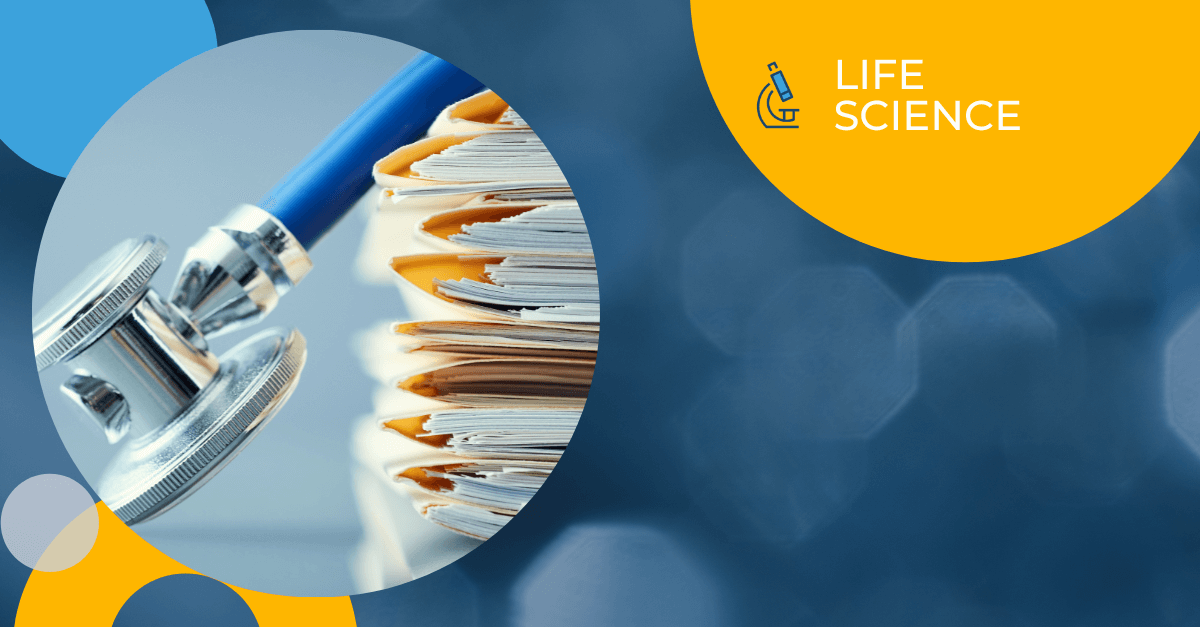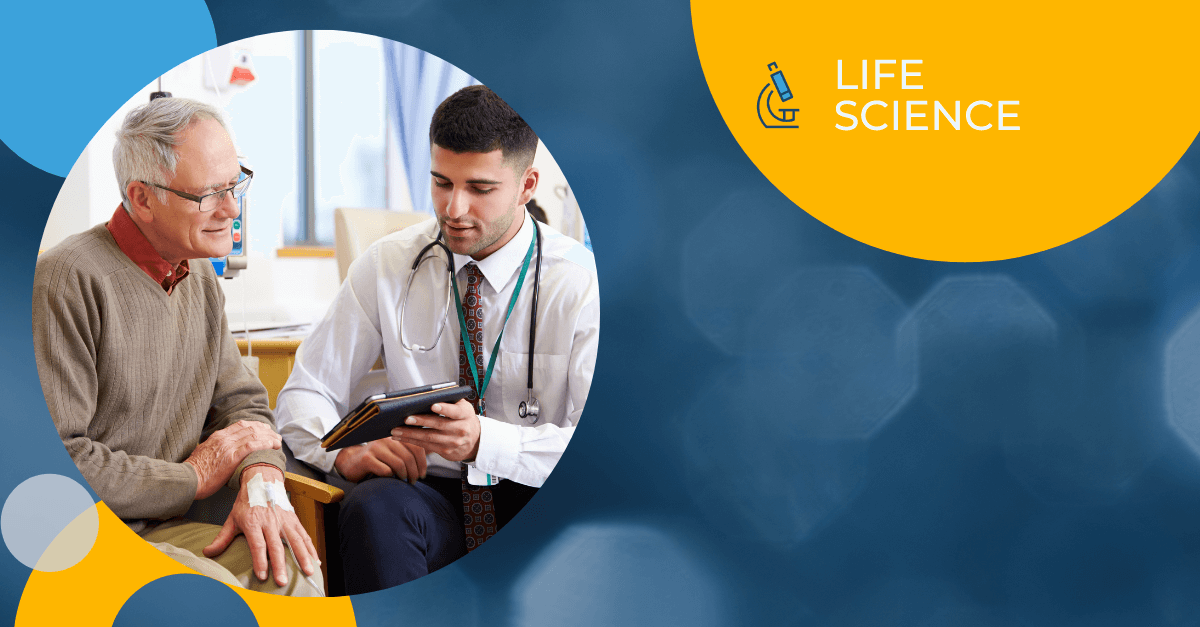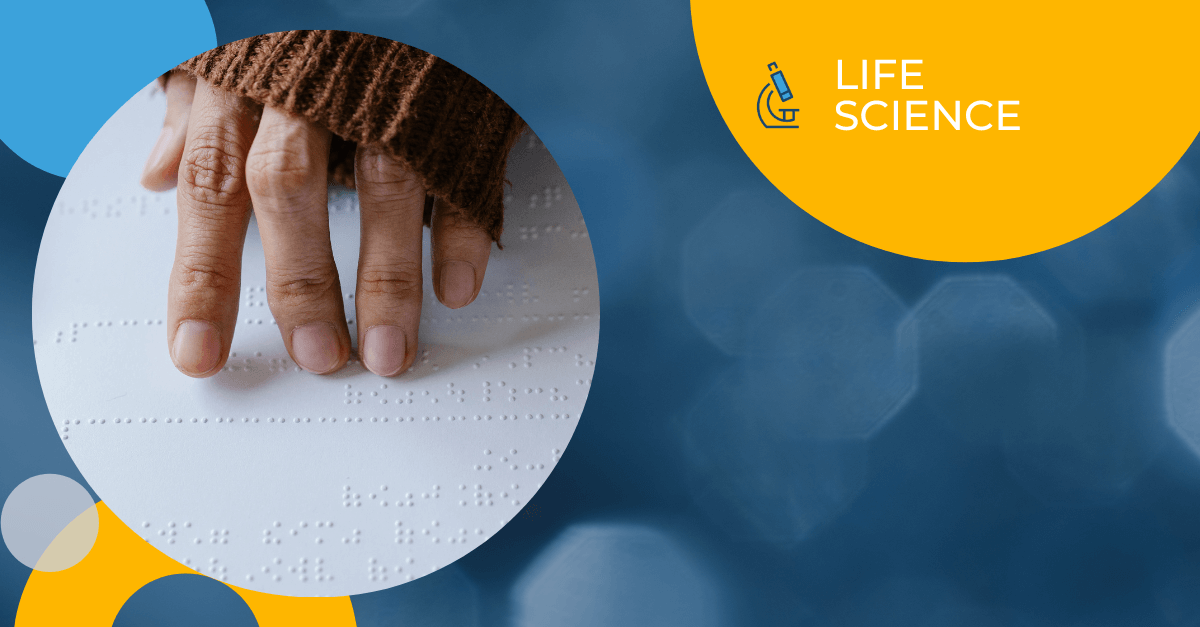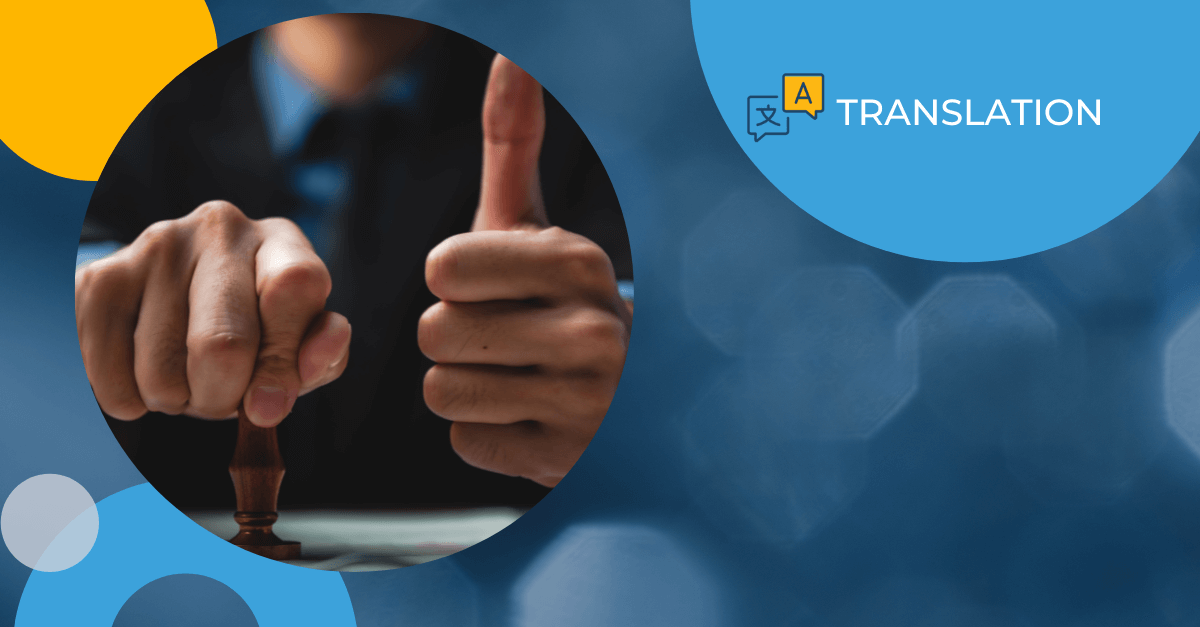Category: Life Sciences
Inside MedTech Translation Challenges: Ensuring Multilingual Regulatory Compliance

Language isn’t just a formality when ensuring multilingual regulatory compliance, especially for FDA submissions. It’s a compliance variable. A risk factor. A potential blocker to market entry.
MedTech and Life Sciences companies with clinical trials in Switzerland or the EU often deal with complex document sets: handwritten notes, redacted files, scanned PDFs, and content authored in multiple languages, such as Swiss German or Swiss French. These aren’t niche complications. They are widespread risks that can delay submissions, trigger agency queries, or even result in rejection.
That’s what one global orthopedic device manufacturer faced. After a successful European launch, they were scaling toward U.S. commercialization—until a sudden FDA safety alert forced them into a time-critical supplemental submission. The content? Nearly a million words of Swiss German and Swiss French clinical data were redacted, handwritten, and challenging to process.
Why Multiple Official or Regional Languages Raise the Stakes for Multilingual Regulatory Compliance
Countries with multiple official or regional languages introduce unique challenges for multilingual regulatory compliance. Even when a dominant language exists, documents may include content in secondary languages—often embedded within notes, reports, or redacted sections. These segments can be overlooked during initial scoping, leaving critical information untranslated and potentially causing incomplete regulatory submissions, agency questions, or delays. Automated language detection is often unreliable without human review, and many companies assume their files are monolingual until it’s too late.
In Morningside’s high-stakes FDA rescue, our client was based in Switzerland, a linguistically unique country. While German is most widely spoken, Swiss German differs significantly from High German in vocabulary, spelling, and structure. It’s rarely written formally and is heavily contextual, making it unsuitable for automated translation or generalist linguists.
While more standardized, Swiss French often appears embedded within Swiss German documents, particularly in bilingual regions or investigator notes. Our team discovered multiple unflagged French-language segments not scoped in the initial file inventory. If these had gone untranslated, the FDA submission would have been incomplete.
The Hidden Challenge of Redacted PDFs and Handwritten Notes
Even more problematic than language can be format, and not every language provider can handle the challenge. That is where Morningside aims to make a difference.
Nearly every file came in as a scanned, redacted PDF, with no editable source. Many had annotations, strikethroughs, or handwritten investigator comments. Some were nearly illegible. Others alternated between typed Swiss German and cursive French on the same page.
These aren’t translation-ready formats. Before any linguistic work could begin, Morningside’s team had to manually reconstruct hundreds of documents, converting static scans into clean, editable Word files while preserving:
- Original formatting and layout
- Confidential redactions
- Terminology integrity
- Annotations and page logic
This step is often overlooked, but it’s critical. If formatting is off or the submission includes broken tables, cut-off text, or misaligned annotations, your documents can be rejected before content is reviewed.
Real Pitfalls in Multilingual Regulatory Compliance Submissions
Here’s what most companies underestimate when managing clinical translation from multilingual trial regions like Switzerland:
1. Embedded Languages Go Undetected
Your submission could have untranslated content if you don’t flag bilingual sections early. The risk isn’t just missing words; it’s in failing to disclose critical trial outcomes or safety data.
2. File Inventories Don’t Match Deliverables
Especially with redacted content, what you think you’re submitting and what’s delivered often differs. Without a dynamic, phase-aligned file tracking system, critical files may be skipped, or the wrong ones processed.
3. Terminology Drifts Across Batches
Without a centralized terminology system, medical concepts can be translated inconsistently. In regulatory contexts, inconsistency signals risk. It creates doubt about quality control—and in the FDA’s eyes, that can mean more questions or extended review timelines.
4. OCR Tools Fail on Complex Files
Optical character recognition (OCR) struggles with handwritten or heavily redacted content. Poor OCR extraction leads to incomplete translations, spelling errors, and layout issues that don’t pass submission standards.
How Morningside Solves It
This was a high-stakes regulatory rescue. Over nearly two years, Morningside managed 13 overlapping translation phases, each under deadline pressure and evolving scope.
Here’s how we responded:
- Language audits on every file batch to uncover any Swiss French segments missed in scoping
- Manual reconstruction of every redacted PDF into FDA-ready formats, using trained specialists—not just OCR
- Certified medical linguists fluent in both Swiss German and Swiss French, supported by QA reviewers with regulatory submission experience
- Custom file-tracking and triage systems, synced to FDA submission checkpoints so the most urgent documents were prioritized
- Rolling delivery model, so translated files were delivered in sequence, allowing regulatory teams to review and respond continuously rather than waiting on full batch delivery
When a particularly complex batch arrived, with pages of handwritten notes, new French content, and an urgent turnaround needed, our team didn’t flinch and worked overnight to rebuild, translate, and deliver the documents before the next morning’s checkpoint.
As the client later said:
“Morningside didn’t just meet deadlines; they anticipated problems before we even saw them. Their proactive communication turned a high-stress situation into a manageable process. It felt like an entire in-house team was dedicated to our submission.”
— Regulatory Affairs Lead, Global Medical Device Manufacturer
Why Multilingual Regulatory Compliance Matters Now More Than Ever
The reality is that multilingual regulatory compliance isn’t optional anymore. Clinical trials are becoming more global, and regulators are demanding more transparency, formatting consistency, and traceability of translated content.
If your data is stored across languages and documents, especially in scanned or redacted formats, you need a partner that goes beyond surface-level translation.
You need:
- Language detection and triage at intake
- Medical-trained linguists familiar with EU trial structure
- A formatting and QA team to reconstruct and certify every file
- Project managers who communicate constantly, align with submission phases, and adapt on the fly
That’s how you prevent errors. That’s how you preserve trust with the FDA. And that’s how you protect your path to market.
Want to see how this played out? Read our case study!
Watch our 2-minute FDA rescue video
Discover how Morningside helped preserve U.S. market access for a next-gen medical device—despite language mismatches, redacted content, and tight regulatory deadlines.
TL;DR
When submitting multilingual regulatory documents—especially to the FDA—language and format aren’t just details; they’re compliance risks. MedTech companies running clinical trials in regions like Switzerland face Swiss German and Swiss French content in handwritten, redacted, or scanned PDFs. These formats and embedded languages can delay submissions, trigger queries, or cause outright rejection.
Morningside helped a global orthopedic device company navigate nearly a million words of complex content by:
-
Auditing files for embedded languages
-
Reconstructing redacted PDFs into editable, submission-ready formats
-
Using certified linguists fluent in Swiss German and Swiss French
-
Maintaining centralized terminology and dynamic file-tracking aligned to submission phases
-
Delivering rolling batches to enable continuous regulatory review
The result: the FDA submission met deadlines, avoided errors, and preserved U.S. market access.
Key takeaway: Multilingual regulatory compliance is now critical. Without specialized linguists, robust QA, and proactive project management, translation errors and formatting issues can derail high-stakes submissions.
About Morningside
At Morningside, a Questel Company, we support more than 4,000 clients in 55 countries. We provide end-to-end language solutions across pharma, biotech, medical devices, and healthcare—guiding products safely from patent to post-market.
Our services include clinical translation and validation, regulatory submissions for FDA, EMA, CFDA, and PMDA, medical interpretation and content commercialization. Every project benefit from our unwavering commitment to quality, leveraging certified subject matter experts, ISO-compliant processes ensure consistent excellence.
Our industry-leading client platform offers 24/7 transparency and control over project timelines and spend, paired with dedicated white-glove support from specialized Life Sciences project managers.
With over 20 years of experience, Morningside is your trusted partner for navigating the complex linguistic and regulatory challenges of the life sciences industry.
We don’t just translate. We protect your path to commercialization.
Request a Quote to get started today.
Get the latest insights delivered to your inbox
When Clinical Data Translation Can Make or Break FDA Approval

Flawless clinical data translation for FDA approval isn’t a formality—it’s a prerequisite for regulatory success.
The regulatory submission process is complex enough. Add multilingual clinical data, scanned documents, handwritten notes, and a looming FDA deadline, and suddenly, the risk of missteps skyrockets.
Translation is treated as a late-stage task for many MedTech and Life Sciences companies. However, clinical data translation becomes mission-critical when the FDA comes knocking with a safety alert, as it did with one global orthopedic device manufacturer; there’s no room for error.
What is the Real Cost of Poor Clinical Data Translation?
Translation issues can seem like a minor oversight until they delay or derail a regulatory submission. Poor clinical data translation for FDA approval can lead to non-compliant documents, formatting issues, or overlooked language segments. For example, missing embedded language sections, such as unexpected Swiss French phrases in a Swiss German file, can slip through initial scoping and result in incomplete or non-compliant submissions.
Misaligned file inventories often mean essential documents are overlooked while irrelevant ones are mistakenly processed, wasting time and resources. Terminology inconsistencies across files can introduce confusion or signal unreliability during FDA review. And formatting errors, especially in scanned or redacted documents, can make submissions unreadable or appear noncompliant.
In our client’s case, any one of these issues could have resulted in a failed FDA response. Instead, with tight coordination, our team translated and reconstructed nearly a million words, preserving formatting, terminology, and meaning with surgical precision.
What Does Clinical Data Translation for FDA Approval Really Involve?
Many assume translation is a simple exercise in converting text from one language to another. But clinical data translation for FDA approval must be accurate, complete, and compliant—far beyond a literal translation.
Certified and validated translation means relying on medical-trained linguists who are fluent not just in the target languages but also in clinical terminology and regulatory context. In our client’s case, that meant experts in both Swiss German and Swiss French who could handle redacted scanned PDFs with no editable source files and still deliver consistent formatting.
Another critical factor is terminology consistency. Without a harmonized glossary or centralized terminology system, subtle inconsistencies can emerge across submission phases and compromise credibility. This is especially risky in overlapping, multi-phase projects where dozens or hundreds of documents are reviewed under tight deadlines.
Perhaps most importantly, every translated document must align with FDA deadlines and be sequenced appropriately. Delivering content in rolling batches allows your regulatory team to review and submit incrementally, which can be the difference between meeting a deadline and missing it.
Morningside helped the client do just that, translating, reconstructing, and certifying hundreds of Swiss German and Swiss French clinical documents under pressure, enabling the regulatory team to submit confidently.
Inside the Workflow: Operational Best Practices for Regulatory Translation
If facing a high-volume or multilingual FDA submission, your workflow should include centralized project management to ensure clarity and accountability across phases. File validation tools should be used at intake to confirm that the documents match the regulatory master list and flag any discrepancies before translation begins. Pre-translation preparation, including labeling, formatting, and segmenting papers, is essential to enable a smoother linguistic workflow.
Language detection audits should also be built in, especially for trial data from multilingual regions like Switzerland. Embedded content in another language can go undetected and result in partial or incorrect translations. And finally, working in a rolling delivery model allows your team to keep pace with shifting priorities and regulatory deadlines.
This was precisely how Morningside approached the rescue project. Through 13 overlapping translation phases, our project managers constantly communicated with the client’s CRO and regulatory team, adjusting workflows in real time and preventing single-point delays.
Are You Translation-Ready? Here’s Your Quick FDA Readiness Checklist
Before you submit to the FDA, make sure your language workflows can answer “yes” to each of the following:
- Do you have complete, editable source files for every document?
- Have all embedded or handwritten language sections been flagged for translation?
- Are your translators medically trained and ISO-certified?
- Are you using a centralized terminology management system?
- Is every deliverable formatted to FDA specifications and properly certified?
- Do you have a translation partner who can scale across multiple languages and submission phases?
Why It Matters
The consequences of poor clinical data translation for FDA approval aren’t theoretical. A single error can threaten U.S. market access and patient impact. Our client’s story highlights just how close even a well-prepared regulatory team can come to losing U.S. market access. A single overlooked file, a missed phrase in a secondary language, or an incomplete document set could have shut down a critical commercialization window. Morningside helped preserve access to a life-changing orthopedic device for thousands of patients through precise, high-stakes translation support.
In the end, it wasn’t just about translation. It was about strategy, trust, and relentless precision.
Frequently Asked Questions (FAQ)
What is clinical data translation for FDA submissions?
Clinical data translation for FDA submissions involves converting trial documentation, often written in languages like Swiss German or French, into English, while maintaining regulatory accuracy, formatting, and terminology. These translations must meet FDA standards to ensure your submission is complete and compliant.
Why do regulatory translations require medical-trained linguists?
Medically trained linguists understand clinical terminology, regulatory context, and industry nuances. Translation errors in FDA submissions aren’t just inconvenient. They can delay approvals, trigger audits, or result in non-compliance.
What happens if I submit incomplete or poorly translated documents to the FDA?
You risk significant delays, failed submissions, or loss of market access. Even formatting errors or missing embedded languages can result in a non-validated submission. FDA-ready translation services must combine linguistic, technical, and regulatory expertise.
How do I know if my translation partner is FDA-ready?
Look for ISO-certified teams, medical-trained linguists, centralized terminology systems, and workflows that support document reconstruction, rolling batch delivery, and multilingual content handling. Your partner should function as a strategic extension of your regulatory team.
Want to avoid costly delays?
Read our latest case study, to learn how we can support you.
About Morningside
At Morningside, a Questel Company, we support more than 4,000 clients in 55 countries. We provide end-to-end language solutions across pharma, biotech, medical devices, and healthcare—guiding products safely from patent to post-market.
Our services include clinical translation and validation, regulatory submissions for FDA, EMA, CFDA, and PMDA, medical interpretation and content commercialization. Every project benefit from our unwavering commitment to quality, leveraging certified subject matter experts, ISO-compliant processes ensure consistent excellence.
Our industry-leading client platform offers 24/7 transparency and control over project timelines and spend, paired with dedicated white-glove support from specialized Life Sciences project managers.
With over 20 years of experience, Morningside is your trusted partner for navigating the complex linguistic and regulatory challenges of the life sciences industry.
We don’t just translate. We protect your path to commercialization.
Request a Quote to get started today.
Get the latest insights delivered to your inbox
Medical Translation for Regulatory Submissions: Why ‘Good Enough’ Isn’t Good Enough Anymore

How global trial teams rethink medical translation for regulatory submissions workflows for speed, compliance, and AI-readiness, and why your strategy needed to catch up, yesterday.
What’s the actual cost of outdated medical translation for regulatory submissions?
If you’ve ever sat staring at your inbox, waiting on a translated ICF so a site can open…
If you’ve ever sighed reading a safety report riddled with terminology that missed the mark, again…
If you’ve ever had to re-explain formatting requirements to yet another vendor who just didn’t get it…
Then you already know: Medical translation for regulatory submissions isn’t just operational friction. It’s the silent weight your team carries, again and again, with no real name or strategy behind it. But here’s the shift: What if translation wasn’t a delay to manage, but a lever to accelerate? What if it wasn’t a line item to justify, but a quality function to lead with?
For decades, translation was treated like background noise. But the reality is, it’s always been infrastructure. There is no denying today’s world with tighter timelines, stricter audits, and AI-validated systems. That infrastructure needs to evolve because the risks aren’t theoretical—they’re measurable!
If you have yet to experience it, you won’t want to. Delayed or inaccurate informed consent forms, for example, can halt site activation or worse, jeopardize patient enrollment. Both could cost you millions or months of lost time. Errors in clinical protocols or safety reports have been shown to trigger non-compliance findings during audits, leading to expensive remediation or trial holds. Meanwhile, fragmented vendor management often results in inconsistent quality and a lack of trackability, raising questions about the integrity of submissions.
But this isn’t about fear. It’s about clarity. It’s about seeing what was always true, just sometimes hidden. That your team translates meaning across languages, documents, and jurisdictions is how you show up in trust, precision, and readiness. And once you see that, you can never unsee it.
Why This Moment Is About Reframing a Standard
Decades ago, translation was considered a downstream service. Something reactive, low on the priority list, was managed when it became urgent. But that was a version of the world that no longer exists. Lift your head from your screen and look around. Today, global trials move fast; regulators expect traceability, and digital systems need clean, structured inputs. The old norm where translation could be a task tacked on no longer holds up under modern demands.
The studies confirm this: lagging timelines caused by translation add an average of 4–6 weeks to study schedules globally (Kumar et al., 2022). Quality inconsistency across multiple language service providers results in uneven terminology and reviewer expertise, complicating regulatory reviews and increasing rework (Chen & Patel, 2023). Many organizations still rely on disconnected workflows and manual tracking that come with major risks during inspections (Smith & Garcia, 2021). And with regulatory pressure mounting to incorporate AI-validated processes, traditional workflows risk non-compliance (Li & Wang, 2024; FDA, 2023; European Medicines Agency, 2022).
You don’t have to wait for translation to “become a problem” before elevating it. You can build your team’s advantage around it now. When you shift translation from a checkbox and into strategy, everything downstream can then move faster, safer, and more integrity.
Why This Moment Demands a New Perspective on Translation Strategy
Translation isn’t a service anymore. It’s a system. And systems must scale across geographies, languages, formats, and authorities.
Global regulators like the FDA and EMA are getting sharper on data integrity, traceability, and validated processes. As digital submissions and AI take center stage, your language operations need to hold up under scrutiny (FDA, 2023; European Medicines Agency, 2022).
Because at the end of the day, medical translation is more than converting text. It’s about upholding meaning. Accuracy. Consent. Patient safety. It’s about making sure that what we send out into the world can be trusted.
What Morningside Offers Is Not Just a Platform We Offer a Paradigm Shift
Most platforms optimize what already exists. HUB was built to reimagine what’s possible.
- HUB is a secure, cloud-based platform for managing translation and localization in regulated life sciences. Consolidate your language assets, deadlines, and document versions all in one location. Ensure audit-readiness for every edit, approval, and update made. We facilitate real-time collaboration on translation workflows for global teams and CROs while ensuring regulatory submission preparedness for clinical trial documents, IFUs, informed consent forms (ICFs), and beyond. HUB signifies control, visibility, and compliance in global trial translations.
- HUBai as a part of our HUB+ subscription offers private, on-demand machine translation, designed specifically for early-stage content review and internal exploration while ensuring data privacy and security. It can be used at any time for the quick review of multilingual clinical documents, such as site communications, investigator brochures, or safety reports. This helps to identify which documents need human translation for submission and which are for reference only. Thus, your sensitive study data remains confidential, unlike with public MT engines. Together, these tools deliver transparency, efficiency, and compliance, reducing manual effort, eliminating versioning errors, and accelerating time to market.
Compliance and Quality Assurance in Medical Translation: Built Into Every Step
Morningside’s solutions are ISO-compliant, with linguists and reviewers trained specifically in regulatory language standards. Automated validation checkpoints reduce human error, and centralized audit trails simplify inspections.
Reducing manual handoffs cuts turnaround times and decreases translation errors and inconsistencies. Clinical protocols and investigator brochures, for example, benefit from standardized terminology libraries, ensuring accuracy and smoother regulatory acceptance.
Real Impact You Can Achieve
Global sponsors leveraging HUB can see transformative results: review cycles cut in half from 12 weeks down to 6, improved submission acceptance rates, and stronger control over costs and quality. By centralizing workflows, the platform eliminates fragmented emails and reduces rework, accelerating time-to-market and boosting compliance. It’s not magic—it’s infrastructure. Powered by HUB.
Let’s Talk
You’re not alone in feeling the pressure of tighter timelines, stricter audits, and AI-validated systems. And you don’t have to solve it with duct tape, spreadsheets, and late-night email chains anymore.
We’d love to show you how Morningside’s HUB suite can help you:
- Make translation a strength, not a stressor
- Build workflows that work with AI, not against it
- And align your operations with the kind of compliance that doesn’t keep you up at night
Because when translation works as it should, your whole trial moves faster, safer, and stronger. Let’s talk. Let’s build the future of regulatory translation—together.
About Morningside
Morningside, a Questel company, equips the world’s leading life sciences organizations with a full suite of end-to-end language solutions for their regulatory, clinical, commercial and patent needs. With over 4,000 clients in 55 countries, we’re globally recognized for our life science expertise and technology innovation across pharma, biotech, medical devices, and healthcare. Our life sciences translation services ensure your products and ideas seamlessly reach new markets and comply with all regulatory and cultural requirements through every stage of the product lifecycle from patent to post-market.
Contact Morningside today to discuss how we can support your communication needs and help make your research is accessible to a global audience.
References
Chen, X., & Patel, M. (2023). Advances in medical translation technology for regulatory compliance in clinical trials. Journal of Clinical Regulatory Science, 14(1), 25–38. https://doi.org/10.1016/j.jcrs.2023.01.005
FDA. (2023). Guidance for industry: Use of electronic records and signatures in FDA-regulated clinical trials. U.S. Food and Drug Administration. https://www.fda.gov/regulatory-information/search-fda-guidance-documents/guidance-industry-use-electronic-records-and-signatures-fda-regulated-clinical-trials
Kumar, S., Diaz, M., & Lee, T. (2022). Managing language consistency and quality assurance in multinational clinical trials. Regulatory Affairs Journal, 18(2), 112–126. https://doi.org/10.1177/1234567890123456
Li, Y., & Wang, J. (2024). AI-enabled translation workflows and compliance in life sciences. Journal of Translational Medicine and Informatics, 20(3), 89–104. https://doi.org/10.1016/j.jtmi.2024.02.007
Smith, J., & Garcia, L. (2021). Reducing regulatory risks through centralized translation management. Clinical Trial Insights, 10(4), 67–80. https://doi.org/10.1080/clinicaltrial.2021.004567
Get the latest insights delivered to your inbox
The Importance of Making Clinical Trials Accessible: Translating Lay Summaries

We understand that in clinical research, transparency and accessibility are key to communicating complex data to a broader audience. Lay summaries play a vital role in bridging the knowledge gap by translating intricate clinical trial data into language that is clear and accessible to non-specialist readers. This is essential not only for meeting regulatory requirements but also for fostering trust and understanding within patient communities and the general public.
In this blog, we’ll explore the importance of translating lay summaries, best practices for creating them, and introduce you to our guide, Effective Lay Summaries: Guidelines for Creation and Translation.
What Are Lay Summaries and Why Are They Important?
A lay summary is a simplified version of clinical trial results, written in plain language to make it accessible for the general public. These summaries are vital for patient-centric healthcare as they allow non-specialists to understand research findings, fostering transparency and enhancing trust in medical research. In the European Union, for example, clinical trial sponsors are required by the EU Clinical Trial Regulation (EU CTR 536/2014) to provide lay summaries, underscoring the commitment to accessible healthcare information.
Why Translate Lay Summaries?
With clinical trials often spanning multiple countries, translating lay summaries into relevant languages ensures that patients across diverse linguistic backgrounds can access trial information in their native language. This not only increases patient engagement and inclusivity but also aligns with ethical research practices, especially as clinical trials aim to serve a global population.
Translated lay summaries also help meet regulatory requirements in regions where localized, patient-accessible information is mandated. For example, in the EU, accurate translations of lay summaries are essential for compliance with local language standards, allowing all stakeholders, regardless of language barriers, to access vital information.
Best Practices for Creating and Translating Lay Summaries
To help clinical trial sponsors and researchers create effective lay summaries, Morningside’s new guide, Effective Lay Summaries: Guidelines for Creation and Translation, provides comprehensive advice on creating clear, compliant summaries that resonate with non-specialists. Below are a few key insights:
- Write at an Accessible Literacy Level
Ensuring readability is critical. Lay summaries should avoid medical jargon and use everyday language, with a focus on simplicity and clarity. The guide includes practical tips on readability assessments and advice for simplifying technical language to keep the information digestible for all audiences. - Utilize Visual Aids
Visual aids can significantly enhance comprehension by providing a visual representation of complex data. Using charts, infographics, and images helps break down complex concepts into accessible formats that are easier to understand and remember. - Ensure Translation Quality and Consistency
Translating lay summaries requires an understanding of both the source material and the target audience’s language. Maintaining accuracy while simplifying complex information demands expert translators who can convey nuanced medical information without compromising on clarity. Morningside’s guide outlines quality control steps and best practices for translation to ensure consistency and accuracy.
Quality Control in Lay Summary Translations
Quality assurance is a key step in ensuring that translated lay summaries remain accurate and consistent across languages. Our guide emphasizes the importance of using rigorous quality control processes, including third-party reviews and linguistic checks, to ensure that each translated summary meets compliance standards and accurately reflects the source material. This approach supports consistency, reduces errors, and upholds the credibility of the clinical trial results.
Explore Morningside’s Translation Services for Life Sciences to learn more about our specialized approach to lay summary translation.
About Morningside
Morningside, a Questel company, is a trusted leader in language services for life sciences, providing high-quality translations, regulatory support, and accessibility solutions tailored to the healthcare and clinical research sectors. We partner with clinical trial sponsors and research organizations to ensure their communications are accurate, compliant, and accessible. Visit our Life Sciences Translation page to explore our full range of translation and localization services.
Creating and translating lay summaries for clinical trials is essential to meeting regulatory requirements, fostering transparency, and ensuring inclusivity for diverse patient populations. Download our comprehensive guide, Effective Lay Summaries: Guidelines for Creation and Translation, to gain practical insights into crafting accessible, compliant, and clear lay summaries.
Contact Morningside today to discuss how we can support your clinical trial communication needs and help make your research accessible to a global audience.
Get the latest insights delivered to your inbox
Ensuring Accessibility in Healthcare: The Role of Braille in Life Sciences

Braille plays an essential role in making healthcare information accessible to those with visual impairments. This tactile system, composed of raised dots, allows individuals who are blind or visually impaired to access information, maintain independence, and engage with essential documents and instructions in various contexts.
In this blog, we’ll explore how Braille adaptations benefit the life sciences, particularly for healthcare documents, patient information leaflets, and medication packaging.
What is Braille and Its Significance in Healthcare?
Braille is a tactile writing system that uses raised dots to represent letters and symbols. Its adaptability spans both printed materials and digital formats, with devices like refreshable Braille displays making digital content more accessible than ever. For patients with visual impairments, this access is crucial for understanding healthcare instructions, dosages, and more, empowering them to take control of their health with greater autonomy.
Braille Compliance in the Life Sciences Industry
Regulations such as the EU Directive 2001/83/EC require pharmaceutical companies to provide essential information in Braille on packaging, covering details like product name, strength, and intended age group (where applicable). This regulatory standard ensures that visually impaired patients can identify their medications safely, thereby supporting their independence and reducing the risk of medical errors.
In the U.S., Braille is not mandatory for pharmaceutical packaging, but including Braille on medical products aligns with growing calls for inclusivity in healthcare and is considered an industry best practice in accessibility.
How Braille Benefits Patients in Life Sciences
- Increased Patient Autonomy: Patients can independently verify medication information, dosage, and instructions, critical for their safety and confidence in self-care.
- Enhanced Compliance and Safety: Clear Braille labeling minimizes potential errors by enabling patients to cross-check essential medication details.
- Improved Quality of Life: By providing information in an accessible format, life sciences companies contribute to a more inclusive healthcare system, ultimately enhancing the quality of life for visually impaired patients.
Braille and Technology: Expanding Digital Accessibility
With innovations such as Braille e-readers and refreshable Braille displays, visually impaired individuals can access online health information. Morningside, a leader in language services for life sciences, assists companies in adapting healthcare documents into accessible Braille formats, ensuring inclusivity across both printed and digital channels.
The Role of Braille in Morningside’s Life Sciences Services
Morningside offers specialized Braille adaptation services, transforming essential healthcare documents into accessible formats. By incorporating Braille into patient information leaflets, packaging, and other healthcare documents, Morningside helps ensure that visually impaired patients have the information they need to safely navigate their healthcare journey.
Learn more about our Life Sciences Translation Services and how we support accessibility across the healthcare industry.
About Morningside
Morningside, a Questel company, is a global leader in language services, providing translation and localization solutions to life sciences, legal, and corporate sectors. Our commitment to quality, accuracy, and compliance ensures that clients receive reliable translations for their most critical needs, from regulatory submissions to patient communications. Visit Morningside’s website to explore our full range of services.
Incorporating Braille into life sciences documentation is a powerful step toward accessible healthcare. By prioritizing accessibility, companies demonstrate their commitment to patient safety, inclusivity, and compliance with industry standards. Contact us to learn how Morningside can assist with Braille adaptations and other accessibility solutions tailored to the life sciences.
Get the latest insights delivered to your inbox
Making Clinical Trials Accessible: The Importance of Translating Lay Summaries

In the realm of clinical research, transparency and accessibility are key to communicating complex data to a broader audience. Lay summaries play a vital role in bridging the knowledge gap by translating intricate clinical trial data into language that is clear and accessible to non-specialist readers. This is essential not only for meeting regulatory requirements but also for fostering trust and understanding within patient communities and the general public.
In this blog, we’ll explore the importance of translating lay summaries, best practices for creating them, and introduce you to our guide, Effective Lay Summaries: Guidelines for Creation and Translation.
What Are Lay Summaries and Why Are They Important?
A lay summary is a simplified version of clinical trial results, written in plain language to make it accessible for the general public. These summaries are vital for patient-centric healthcare as they allow non-specialists to understand research findings, fostering transparency and enhancing trust in medical research. In the European Union, for example, clinical trial sponsors are required by the EU Clinical Trial Regulation (EU CTR 536/2014) to provide lay summaries, underscoring the commitment to accessible healthcare information.
Why Translate Lay Summaries?
With clinical trials often spanning multiple countries, translating lay summaries into relevant languages ensures that patients across diverse linguistic backgrounds can access trial information in their native language. This not only increases patient engagement and inclusivity but also aligns with ethical research practices, especially as clinical trials aim to serve a global population.
Translated lay summaries also help meet regulatory requirements in regions where localized, patient-accessible information is mandated. For example, in the EU, accurate translations of lay summaries are essential for compliance with local language standards, allowing all stakeholders, regardless of language barriers, to access vital information.
Best Practices for Creating and Translating Lay Summaries
To help clinical trial sponsors and researchers create effective lay summaries, Morningside’s new guide, Effective Lay Summaries: Guidelines for Creation and Translation, provides comprehensive advice on creating clear, compliant summaries that resonate with non-specialists. Below are a few key insights:
- Write at an Accessible Literacy Level
Ensuring readability is critical. Lay summaries should avoid medical jargon and use everyday language, with a focus on simplicity and clarity. The guide includes practical tips on readability assessments and advice for simplifying technical language to keep the information digestible for all audiences. - Utilize Visual Aids
Visual aids can significantly enhance comprehension by providing a visual representation of complex data. Using charts, infographics, and images helps break down complex concepts into accessible formats that are easier to understand and remember. - Ensure Translation Quality and Consistency
Translating lay summaries requires an understanding of both the source material and the target audience’s language. Maintaining accuracy while simplifying complex information demands expert translators who can convey nuanced medical information without compromising on clarity. Morningside’s guide outlines quality control steps and best practices for translation to ensure consistency and accuracy.
Quality Control in Lay Summary Translations
Quality assurance is a key step in ensuring that translated lay summaries remain accurate and consistent across languages. Our guide emphasizes the importance of using rigorous quality control processes, including third-party reviews and linguistic checks, to ensure that each translated summary meets compliance standards and accurately reflects the source material. This approach supports consistency, reduces errors, and upholds the credibility of the clinical trial results.
Explore Morningside’s Translation Services for Life Sciences to learn more about our specialized approach to lay summary translation.
About Morningside
Morningside, a Questel company, is a trusted leader in language services for life sciences, providing high-quality translations, regulatory support, and accessibility solutions tailored to the healthcare and clinical research sectors. We partner with clinical trial sponsors and research organizations to ensure their communications are accurate, compliant, and accessible. Visit our Life Sciences Translation page to explore our full range of translation and localization services.
Creating and translating lay summaries for clinical trials is essential to meeting regulatory requirements, fostering transparency, and ensuring inclusivity for diverse patient populations. Download our comprehensive guide, Effective Lay Summaries: Guidelines for Creation and Translation, to gain practical insights into crafting accessible, compliant, and clear lay summaries. Contact Morningside today to discuss how we can support your clinical trial communication needs and help make your research accessible to a global audience.
Get the latest insights delivered to your inbox
Certified Translation Services: A Quick Guide

Handling essential documents in a global business, legal, or governmental setting often involves translating those documents accurately and reliably. Certified translation services ensure these translations meet formal standards for use in courtrooms, government offices, and international dealings. In this blog, we’ll cover what certified translation services entail, when they’re necessary, and how to select a reliable Language Service Provider (LSP) for certified translations.
What Does It Mean for a Translation to Be Certified?
In the U.S., certified translation services involve adding a signed declaration from the translator or the translation company attesting to the translation’s accuracy and completeness to the best of their knowledge. This certification acts as a legal assurance that the translation faithfully represents the original document’s content and meets established quality standards.
Certified translations can also be notarized, which includes a notary public verifying the identity of the person signing the certification. Notarization is optional but adds an extra layer of verification in cases where document authenticity is crucial. However, the core purpose of certification is to legally affirm that a qualified professional or certified translation provider completed the translation and adhered to best practices.
When Are Certified Translation Services Required?
Certified translation services are commonly required for a variety of official contexts, including legal, regulatory, and immigration-related submissions. Here are some examples of cases where certified translations are necessary:
1. Courtroom Submissions: Courtrooms frequently require certified translations to meet legal standards for document accuracy and reliability. Certified translation services are indispensable for cases involving lawsuits or trials where documents need to be understood and relied upon by all parties involved.
2. Regulatory Filings: Certified translation services may also be needed for regulatory documents submitted to agencies like the U.S. Food and Drug Administration (FDA) or the Environmental Protection Agency (EPA) as part of compliance processes. Certified translations ensure that crucial details are translated precisely to maintain compliance with regulatory standards.
3. Patent Applications: When filing patents with the United States Patent and Trademark Office (USPTO) or international patent offices, certified translation services are often required to ensure accurate representation of technical and legal terminology. This accuracy is essential to safeguard intellectual property rights in global markets.
Certification requirements vary widely across different agencies and courtrooms, so verifying the specific requirements for each case is critical. A reputable LSP should be able to help you navigate these requirements to ensure your documents meet the necessary standards.
How to Identify a Quality-Certified Translation Provider
When it comes to choosing a certified translation provider, it’s essential to find one with the expertise, reliability, and processes needed to meet your quality and compliance requirements. Here are key attributes to look for in a certified translation provider:
1. Specialized Translators: Certified translation services demand more than just language fluency. The translator should be well-versed in the subject area relevant to your document—whether legal, medical, or technical—to ensure precise terminology and industry-standard accuracy.
2. Clear Certification and Notarization Processes: An experienced provider will have a streamlined process for including certification statements with translations and, if needed, for handling notarization efficiently. Confirming that they can meet additional certification requirements upfront can save time and prevent complications.
3. High Industry Standards and Compliance: Look for certified translation providers who adhere to high industry standards, like ISO certifications, which indicate rigorous quality control. These providers are committed to accuracy, confidentiality, and efficient service delivery.
4. Global Reach and Proven Reputation: Established, certified translation providers often have a history of success with international agencies, court systems, and regulatory bodies. Check for testimonials, case studies, or references, especially if your document will be submitted to global entities like the United Nations or foreign patent offices.
Morningside’s Certified Translation Services
Morningside provides high-quality certified translation services to meet the needs of organizations across various sectors. Our team includes expert linguists trained in legal, medical, technical, and regulatory fields, all equipped to handle complex certification requirements. Our certified translations are regularly submitted to U.S. courts, regulatory bodies, and international patent offices, offering clients accuracy, compliance, and peace of mind.
At Morningside, we prioritize client satisfaction by providing most certifications free of charge and supporting our work with stringent quality checks. Our industry-leading standards ensure that each certified translation is precise and meets the highest standards, whether for legal, regulatory, or business purposes.
About Morningside
Morningside, a Questel Company, is a leading provider of comprehensive language services specializing in translation, localization, and language solutions that support global business, legal, and government operations. We bring over twenty years of experience handling industry-specific translations for clients across diverse sectors, including legal, life sciences, and corporate domains.
With a commitment to quality, we follow ISO-certified processes that ensure the accuracy, confidentiality, and timely delivery of our translations. Our suite of services extends beyond certified translation to include legal and regulatory translation, as well as advanced localization tools. These solutions help streamline workflows, reduce costs, and enhance transparency for clients worldwide. At Morningside, we combine our expertise in language services with a dedication to client satisfaction and language accuracy.
Contact Us
If you require certified translation services or need advice on certification requirements, Morningside is here to help. Our experienced team is available to discuss your specific needs, advise on compliance, and ensure you receive certified translations of the highest quality.
Let Morningside make your document submissions seamless, compliant, and accurate wherever they’re headed, contact us today to get started.
Get the latest insights delivered to your inbox
Best Translation Practices for Labeling Provisions on the Global Stage

Accurate translation of labeling provisions is crucial for life sciences companies that operate across borders.
Ensuring that medical devices, pharmaceuticals, and other life sciences products comply with international labeling regulations can be challenging due to linguistic nuances, regulatory requirements, and regional variations. For companies seeking to expand globally, mastering the translation process for product labels is key to maintaining compliance and ensuring patient safety.
In this blog, we will cover the essential translation practices for labeling provisions globally, addressing common questions and challenges that life sciences professionals face.
The Importance of Accurate Labeling Translation in the Life Sciences Sector
Labeling translation is critical to ensuring that life sciences products meet regulatory standards and reach patients safely. The consequences of inaccurate translations can be severe, ranging from product recalls and regulatory fines to compromising patient health and safety. In the global marketplace, regulatory authorities such as the FDA, EMA, and PMDA have strict requirements for product labeling, and failing to meet these requirements can delay product launches or lead to legal consequences.
Companies must focus on the following best practices to avoid these risks to ensure their labeling translations are accurate, consistent, and compliant.
1. Understand Regulatory Requirements by Region
Every country or region has specific regulatory guidelines regarding product labeling. The European Union, for instance, mandates that pharmaceutical product labels be available in the official language(s) of each member state. In Japan, product labeling must meet PMDA standards, while in the United States, the FDA enforces strict guidelines on the content and language of labeling information.
It’s essential to have an in-depth understanding of the local regulations where your product will be marketed. Working with language experts who are well-versed in the nuances of each regulatory framework can help ensure that your product labeling meets all legal requirements.
2. Prioritize Consistency Across All Labeling Materials
Consistency is critical when translating product labels. Any inconsistency could lead to misunderstandings, putting patient safety at risk. To maintain consistency, companies should use translation memory tools and terminology management systems. These tools allow translators to reference previous translations, ensuring that key terms and phrases are consistent across all materials.
For global labeling, it’s also beneficial to maintain a centralized glossary of approved terms for use across all languages. This helps avoid variations in terminology that could lead to regulatory issues or misinterpretation of important information.
3. Work with Specialized Life Sciences Translators
Labeling translation requires more than just linguistic expertise; it requires an understanding of medical and scientific terminology. Working with translators who have specialized knowledge in the life sciences field ensures that the terminology used is accurate and that the context of medical information is preserved. Misinterpretation of medical terms can lead to serious consequences, making it essential to partner with experts who understand the intricacies of the industry.
4. Implement a Rigorous Quality Assurance Process
Quality assurance is a crucial part of the labeling translation process. This includes multiple layers of review, such as bilingual revision, in-country review, and independent linguistic quality assurance (LQA). These steps help ensure that translations are not only accurate but also culturally appropriate and compliant with regional regulations.
It’s also helpful to have a subject matter expert (SME) review the translations to verify the accuracy of the technical content. SMEs can provide valuable insights into the proper use of terminology and confirm that the translated label aligns with regulatory standards.
5. Address Cultural Differences and Localization Needs
Beyond language, cultural differences can impact how labeling information is understood. Localization involves adapting content not only linguistically but also culturally to ensure it resonates with the target audience. This may include changing units of measurement, adjusting date formats, or altering images and colors to align with cultural norms. Proper localization ensures that labeling is understandable and acceptable to local consumers, which is particularly important in regions with unique cultural considerations.
6. Plan for Continuous Updates and Version Control
Labeling requirements are constantly evolving, and products often need to undergo updates due to regulatory changes or new safety information. Implementing an effective version control system is essential to track changes and ensure that all labels remain up to date. Maintaining a record of each translated version and ensuring that updates are made consistently across all languages helps avoid discrepancies that could lead to regulatory non-compliance.
Why Choose Morningside for Labeling Translation in the Life Sciences Industry?
Morningside, a Questel Company understands the complexities of translating labeling provisions for life sciences products on a global scale. Our team of specialized translators is well-versed in industry-specific terminology and familiar with the regulatory requirements of major markets around the world, including the FDA, EMA, and other authorities.
We use cutting-edge translation management tools to maintain consistency and accuracy across all labeling materials, ensuring that your product information is compliant and safe for patients. Our rigorous quality assurance process, including review by subject matter experts, guarantees that every translation meets the highest standards of quality and reliability. With Morningside, you can be confident that your labeling translations will be handled with the precision and expertise needed to succeed in international markets.
Translating labeling provisions for life sciences products is a complex but essential task to ensure regulatory compliance and patient safety. By following best practices—such as understanding regional requirements, prioritizing consistency, partnering with specialized translators, and ensuring thorough quality checks—you can effectively navigate the challenges of global labeling translation. Morningside offers the expertise and industry knowledge needed to simplify this process and help your products reach new markets safely and successfully.
Contact Us Today
Need help with labeling translations for your life sciences products? Get in touch with Morningside today to learn how we can support your global labeling needs with accuracy, compliance, and industry expertise.
Get the latest insights delivered to your inbox
The Role of Regulatory Bodies in the Medical Device Translation Process

For life sciences companies developing and distributing medical devices internationally, meeting the translation requirements set by regulatory bodies is a crucial step in bringing products to market. Regulatory compliance is a complex process that involves precise communication across languages, and translation plays a key role in ensuring that product information is both accurate and accessible for different markets. In this blog, we will cover the role of regulatory bodies in the medical device translation process, the specific requirements companies need to meet, and best practices for navigating regulatory expectations.
How Regulatory Bodies Impact Medical Device Translation
Regulatory bodies around the world establish guidelines that govern every aspect of a medical device, including its labeling, user manuals, safety information, and marketing materials. These guidelines are in place to protect patient safety and ensure that healthcare professionals and consumers have the information they need to use medical devices correctly.
When it comes to translations, regulatory bodies set standards for what must be translated, how translations should be conducted, and the quality level required for compliance. Failure to meet these translation requirements can lead to delays in product approval, fines, or even product recalls.
Key Regulatory Bodies and Their Translation Requirements
- FDA (United States)
The U.S. Food and Drug Administration (FDA) requires that medical device labels and instructions for use be easily understood by the intended audience. While the FDA doesn’t mandate translations for all medical devices, devices marketed to populations with limited English proficiency may require translations. In addition, clinical trial documentation and other regulatory submissions may need to be translated for review. - European Medicines Agency (EMA) and EU Regulations
The European Union has stringent translation requirements for medical devices. Under the Medical Device Regulation (MDR) and In Vitro Diagnostic Regulation (IVDR), companies must translate all labeling, instructions, and safety information into the official language(s) of each country where the device is marketed. Regulatory bodies in EU member states also conduct audits to ensure that translations meet their quality and accuracy standards. - Health Canada
In Canada, medical devices must have labeling in both English and French. Health Canada requires that all relevant information, including instructions for use and safety warnings, be provided in both official languages. This ensures that healthcare providers and patients in all regions of the country have equal access to important information. - National Medical Products Administration (NMPA) – China
The NMPA requires that all labeling, packaging, and user manuals for medical devices be translated into simplified Chinese. In addition, companies must ensure that these translations are accurate and culturally appropriate, as even minor errors can lead to misunderstandings and potential safety risks.
Challenges in Meeting Regulatory Translation Requirements
- Complex Medical Terminology
Medical device translations often involve highly technical content that requires specialized knowledge. Translators must be familiar with medical terminology, device functionality, and the specific requirements of regulatory bodies to ensure that the translated materials meet compliance standards. - Varying Requirements Across Markets
Each country has its own regulatory framework and translation requirements, which can vary significantly. Navigating these differences requires a thorough understanding of local regulations and the ability to adapt translations accordingly. This is especially challenging for companies marketing their devices in multiple countries simultaneously. - Quality and Accuracy Standards
Regulatory bodies require translations to be accurate, clear, and consistent. This means that companies must implement a rigorous quality assurance process to ensure that all translated materials meet these standards. Inaccurate translations can lead to misinterpretation of instructions, putting patient safety at risk and potentially resulting in regulatory action.
Best Practices for Navigating Regulatory Translation Requirements
- Work with Specialized Medical Translators
Given the complexity of medical device content and the stringent requirements set by regulatory bodies, it’s essential to work with translators who specialize in medical translations. These experts have the knowledge and experience needed to accurately convey technical information and ensure compliance with regulatory standards. - Implement a Robust Quality Assurance Process
Quality assurance is critical in medical device translation. A robust process should include multiple rounds of review, including bilingual revision and independent validation by subject matter experts. This helps to ensure that translations are accurate, complete, and meet the regulatory requirements of the target market. - Leverage Translation Technology
Using translation memory tools and terminology management systems can help maintain consistency across all translated materials. These tools store previously translated content, allowing translators to reference and reuse approved translations, which is especially important for meeting regulatory standards. Consistency in terminology helps to ensure that all product information is conveyed accurately across different languages. - Stay Informed About Regulatory Updates
Regulations governing medical device translations are subject to change, and it’s important for companies to stay informed about any updates that could impact their translation requirements. Partnering with a translation provider that closely monitors regulatory changes can help ensure that your translations remain compliant as new guidelines are introduced.
Why Choose Morningside for Medical Device Translation?
Morningside, A Questel Company offers specialized translation services that are tailored to meet the stringent requirements of the medical device industry. Our team of expert linguists has extensive experience in translating medical device documentation, ensuring that all materials are accurate, compliant, and culturally appropriate. We understand the complexities of international regulations and work closely with our clients to help them navigate the translation process effectively.
We also utilize advanced translation management technology to maintain consistency and quality across all translated materials. Our rigorous quality assurance process ensures that every translation undergoes multiple layers of review, providing you with the confidence that your documentation meets regulatory standards and supports patient safety.
The role of regulatory bodies in the medical device translation process is crucial to ensuring that products are safe, effective, and accessible to users in different markets. By understanding and meeting the translation requirements set by these regulatory bodies, life sciences companies can avoid delays, minimize risks, and ensure successful product launches around the world. Morningside’s expertise in medical device translation can help you navigate this complex landscape with confidence, ensuring that your products meet the highest standards of quality and compliance.
Contact Us Today
Need assistance with medical device translations to meet regulatory requirements? Contact Morningside today to learn how we can support your compliance needs with precision, expertise, and reliability.
Get the latest insights delivered to your inbox
How Can Pharmaceutical Translation Services Impact Your Business?

The precision of language and translation is crucial for global businesses in the pharmaceutical industry.
Pharmaceutical translation services are not just about converting text from one language to another—they are about ensuring clarity, compliance, and safety in every document.
This blog will explore why accurate pharmaceutical translation is essential and how to achieve high-quality outcomes.
The Crucial Role of Pharmaceutical Translation Services
Pharmaceutical translation services play a critical role in the global healthcare market. Missteps in translation can lead to delays in research and production, potential risks to patient safety, and significant liability.
For instance, errors in dosage instructions or misunderstood clinical trial protocols can have serious health consequences. As the industry evolves, the cost of translation errors becomes increasingly significant.
Ensuring High-Quality Pharmaceutical Translations
Start with clear and precise English documents to minimize risks associated with pharmaceutical translation. This ensures that translators can produce accurate translations in the target language. High-quality translations are vital as errors can result in legal liabilities, damage your company’s reputation, and decrease future sales.
How to Identify and Hire Qualified Pharmaceutical Translators
Choosing experienced pharmaceutical translators is essential. They should be proficient in medical terminology and familiar with regional jargon, regulations, and laws. For example, if you need to translate clinical trial documents for a new diabetes drug, the translator should have a pharmaceutical background and specific experience with diabetes-related documentation. Look for translators with relevant certifications and verified experience in the pharmaceutical field.
Comprehensive Accuracy in Pharmaceutical Documentation
Pharmaceutical translation extends beyond clinical studies and regulatory documents. Marketing materials, patents, and website content also require precise translation. Errors in these areas can adversely impact your business by deterring potential clients and medical professionals. Accurate translations in marketing and intellectual property documents are critical to maintaining a positive business image and protecting your innovations.
Addressing Common Challenges in Pharmaceutical Translation
Challenges in pharmaceutical translations include handling complex terminology, ensuring cultural appropriateness, and maintaining consistency. To overcome these challenges, use experienced translators with subject matter expertise, implement thorough review processes, and employ translation management systems to track and manage translations.
The Role of Translation Technology
Translation technology, including AI and translation software, influences the quality of pharmaceutical translations. While these tools can expedite translation and support consistency, human expertise remains crucial. AI tools may struggle with nuanced contexts and specialized jargon, making human oversight necessary for accurate results.
Adhering to Industry Standards
Adherence to industry standards and guidelines, such as those from the International Organization for Standardization (ISO) and regulatory bodies like the FDA, is essential. Following these standards ensures that translations meet regulatory requirements and industry expectations.
What to Do If Errors Are Discovered
If errors are found in translated documents after publication, act swiftly. Implement a corrective action plan that includes notifying affected parties, updating documents, and reviewing your translation processes to prevent future mistakes. Transparency and prompt resolution are key to minimizing reputational damage.
Measuring the Effectiveness of Your Translation Process
Evaluate the effectiveness of your translation process by monitoring key performance indicators such as error rates, turnaround times, and client feedback. Regular reviews and assessments through audits and post-translation evaluations help ensure the accuracy and effectiveness of your translations.
Addressing Cultural Differences
Cultural differences can significantly impact pharmaceutical translations. Ensure that translators are experts in medical terminology and knowledgeable about cultural nuances and regional practices. This approach helps avoid misunderstandings and ensures that the content is appropriate for the target audience.
Why Choose Morningside for Pharmaceutical Translation Services?
At Morningside, A Questel Company, we specialize in pharmaceutical translation services that ensure precision, compliance, and cultural sensitivity. Our expert translators have the specialized knowledge required for accurate translations, adhering to the highest industry standards and utilizing advanced technology for consistency.
Our commitment to quality, combined with our extensive experience in the pharmaceutical sector, makes us the ideal partner for your translation needs. We work closely with you to ensure that all documentation—from clinical trials to marketing materials—is translated accurately and effectively.
Ready to safeguard your business and ensure the highest quality in your pharmaceutical translations? Start working with Morningside today and experience the difference expert translation can make. Contact us now to get started and protect your global success.




